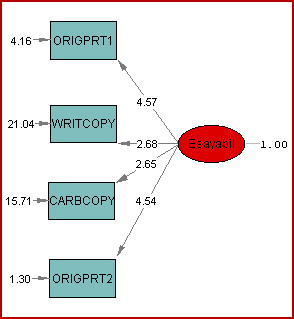Lisrel Free Download
LISREL 9.1 includes a number of new features Combining LISREL and PRELIS functionality. Modern structural equation modeling is based on raw data. With LISREL 9.1, if raw data is available in a LISREL data system file or in a text file, one can read the data into LISREL and formulate the model using either SIMPLIS syntax or LISREL syntax.
This 'zipped' download contains the Version 1.0.3 Operating System update for the X50, which adds the ability to alphabetically sort the programs and combinations in the category menu, as well as addressing a few minor bugs. Korg x50 patches download for windows 7. Korg X50 Patches Download. 1/23/2018 1 Comment Download: www.synthcloud.com Patched and performed by Mauro Pacella This is a high quality, ready to play, collection. Korg’s obligation and your exclusive remedy under the warranty mentioned above, is limited either: (a) to Korg at its own expense using all reasonable endeavours to rectify any non-conformance with the warranty by repair (by way of a patch, work around, correction or otherwise) within a reasonable period of time.
This page describes how to fit a full structural equation model in LISREL. Details on the model, and a link to download the data, can be found Estimation was done using the free student version of LISREL, which can be downloaded. The previous page on confirmatory factor analysis showed how to read in the raw data from an SPSS file (click to review). The LISREL or SIMPLIS syntax used to estimate the model can be created by drawing a path diagram. To do this, go to File → New and scroll down to choose Path Diagram.
When prompted, name the path diagram Full SEM. An empty drawing area opens. To establish the variable names for the model, go to Setup → Title and Comments. The Title and Comments dialog box opens. Enter the title Full SEM. A new dialog box titled Group Names opens. Because the purpose is not to compare different groups, this can be left blank.
The Labels dialog box opens, which is used to identify the names of the variables in the model. To specify the observed variables from the raw data file, click on Add/Read Variables. A new box opens.
Change the Read from file option to PRELIS System File, then browse to find the PRELIS file that was created from the PASW file. The names of the variables from the data file will appear in the Observed Variables column. To name the latent variables, click Add Latent Variables. The first latent variable will be named Intelligence.
The full SEM will also contain a latent variable for humor, so click Add Latent Variables a second time to create an additional variable named Humor. A final dialog box opens to describe the data. Because LISREL will be reading from a raw data file, it is not necessary to include any information about the number of observations. Click OK one more time. The drawing pad appears again.
In the model, humor is treated as endogenous (that is, it is caused by intelligence). Thus, it is necessary to identify humor as an Eta variable by clicking in the box next to the variable name on the left side of the screen. In addition, it is necessary to define the observed variables which correspond to humor as Y variables in the same manner.
Drag the variables onto the drawing pad. (Note: If you get error messages, change the Models: drop-down menu to Basic Model.) Then draw arrows from Intelligence to its indicators, Humor to its indicators, and from Intelligence to Humor. If Humor is not declared to be endogenous (an Eta variable), LISREL will not let you draw the path. The model is not identified unless additional assumptions are introduced. By default, LISREL will assume that the variances for the two latent variables equal one. In this example, the model will be identified by assuming the variance of Intelligence is one, but the scale for Humor will be set by constraining one of the factor loadings. This can be done by clicking on the loading for Simpsons and changing it to one.
LISREL won’t recognize this change, however, until the user then right-clicks on the constraint and chooses Fix. To build the SIMPLIS syntax that will estimate the model, go to Setup → Build SIMPLIS Syntax. LISREL’s syntax editor opens and displays the SIMPLIS syntax. Click the Run LISREL button to run the model. An output file is created (.OUT extension) which contains the model estimates, standard errors, and a number of model fit indices. In addition, the results now display in the path diagram.
